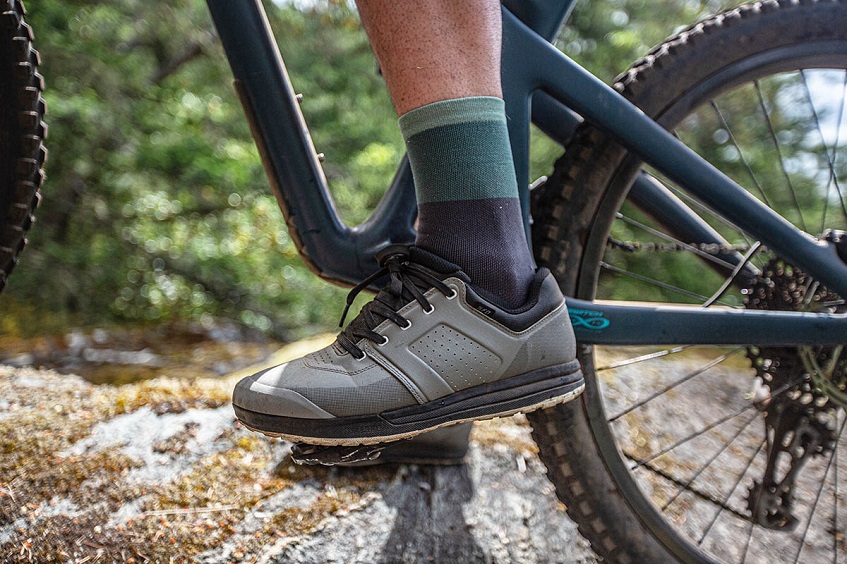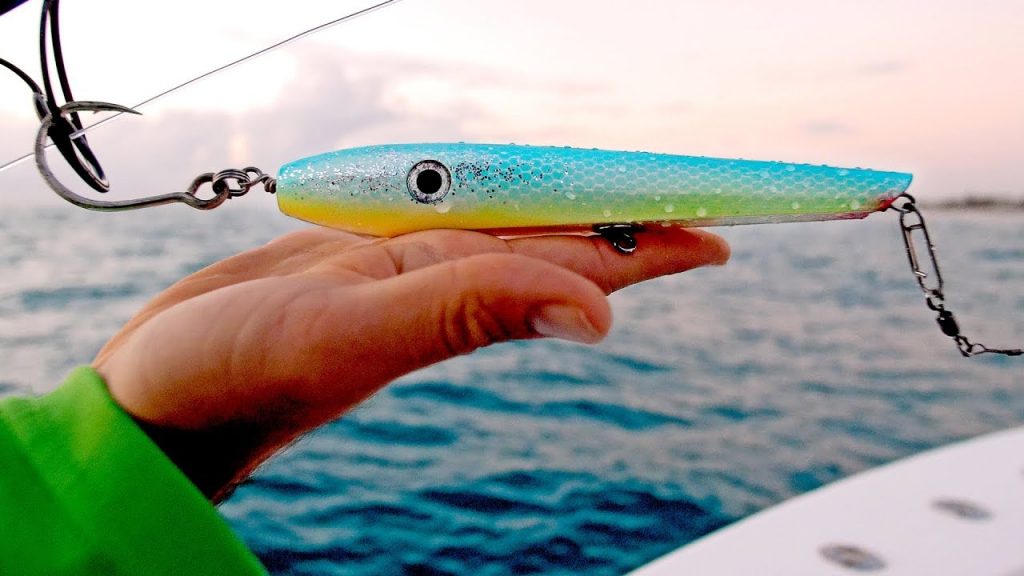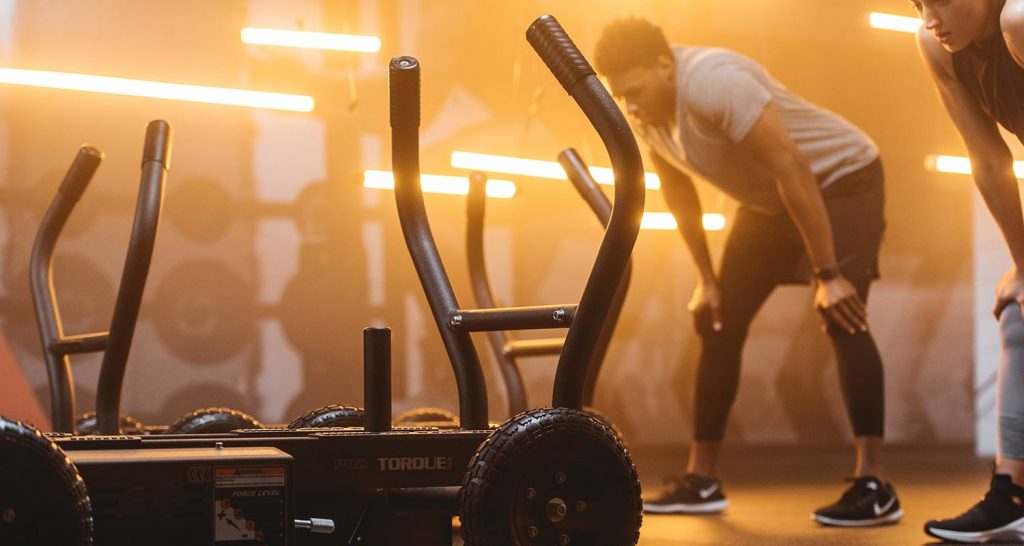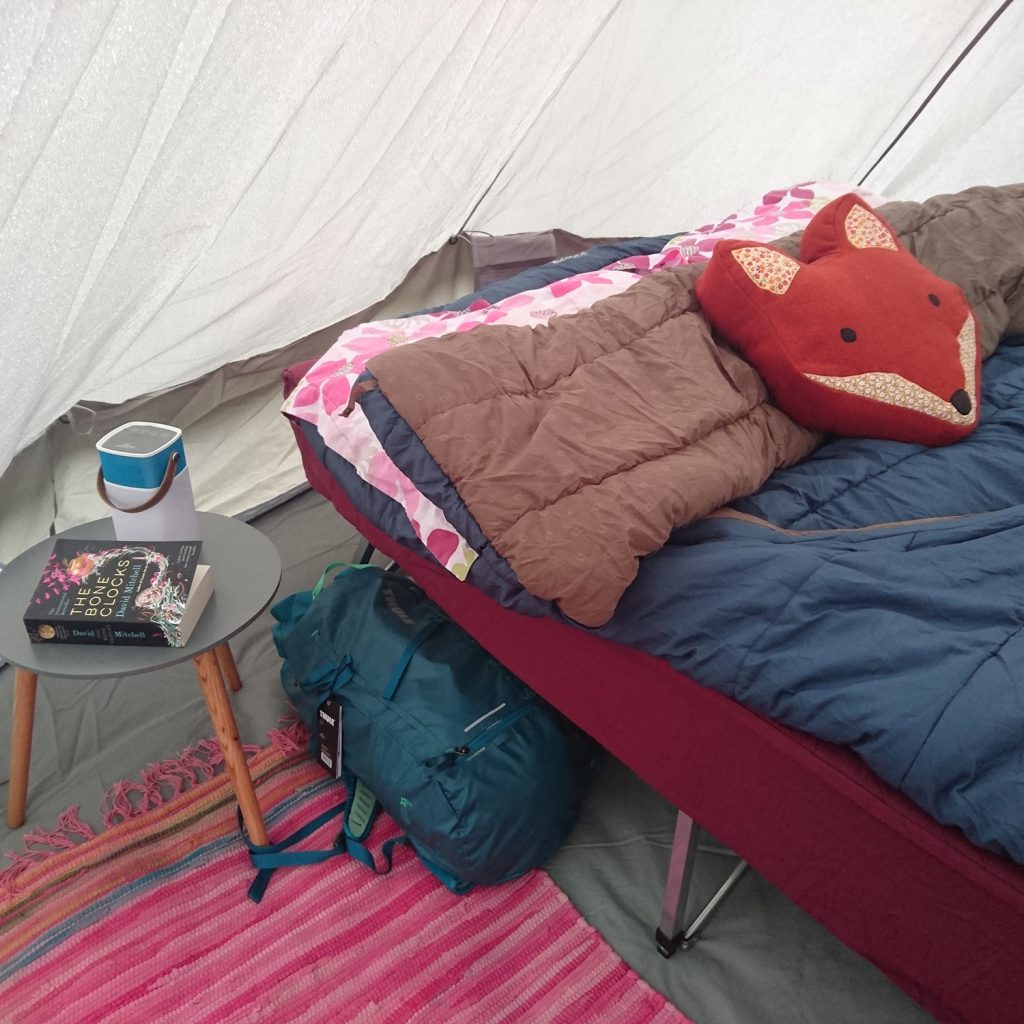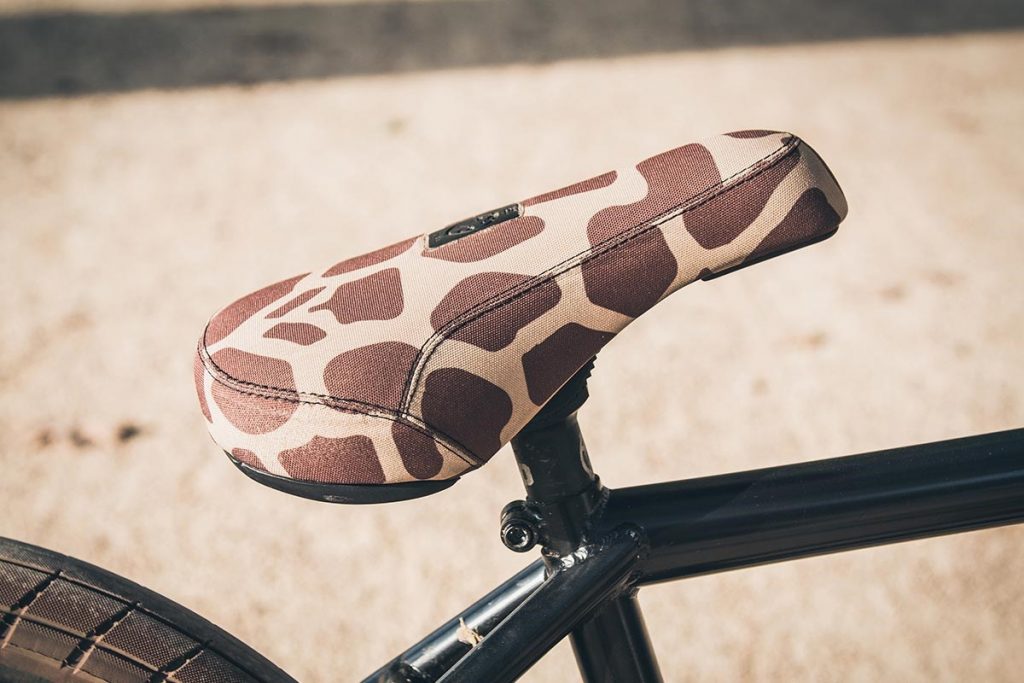What to Wear Mountain Biking: Make Your Next Mountain Bike Trip Safe and Fun
Mountain biking is a fantastic activity for developing strength, endurance, and agility. Whether mountain biking is your passion or part of a cross-training fitness program, having the right bike gear, clothes, and equipment can make your next trip to the mountains a much safer and more comfortable experience.
The Proper Mountain Bike Shoes for Better Performance
You can ride a bike in almost any shoes, but anyone who is serious about mountain biking will sure benefit from specialized mountain bike shoes. As bike pedals determine what footwear you’ll wear, cycling shoes are often matched with a compatible pedal to secure your feet on the bicycle. Bike shoes, as opposed to traditional sports shoes, have stronger soles for more effective energy transmission while you ride.
Most cycling shoes feature a flat or a clip-in technology where you clip onto the pedals using a cleat on the sole of the shoe. This has the advantage of allowing you to create a more fluid effort throughout the pedal stroke, both lifting up and pushing down. Many bike shoes include two or three holes for clipping onto clipless pedals, allowing you to ride more effectively with each stroke. Whether you like cleats or flat pedal shoes, the right mtb shoes collection will provide you with a wide range of options to choose from.
Flat Mountain Bike Shoes
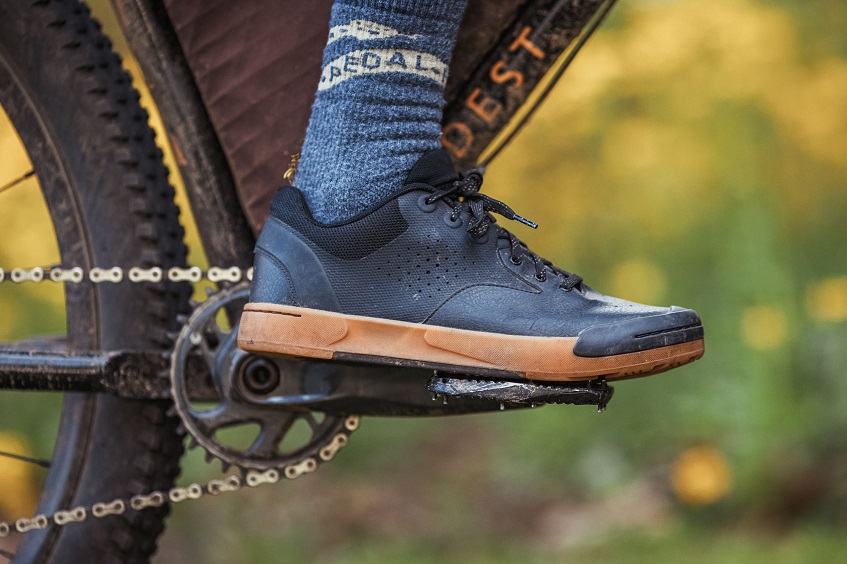
Flats are simply regular pedals that all bikes have, and one of their most significant advantages is that they do not require any specific shoes to ride. Simply hop on your bike and ride with whichever shoes you have on. You can use standard joggers, but mountain bike shoes work considerably better.
A flat pedal mountain bike shoe will often feature a flat sole to increase the contact area with the pedal, but the rubber is stickier than what you’d find on conventional shoes. The majority of flat pedal shoes resemble overbuilt skate shoes and use regular laces. However, velcro straps and even Boa laces are common in some models. If you have laces on your mtb shoes, make sure to tuck the ends out of the way as you don’t want them to get stuck in your pedals or drivetrain.
Clip-in Shoes
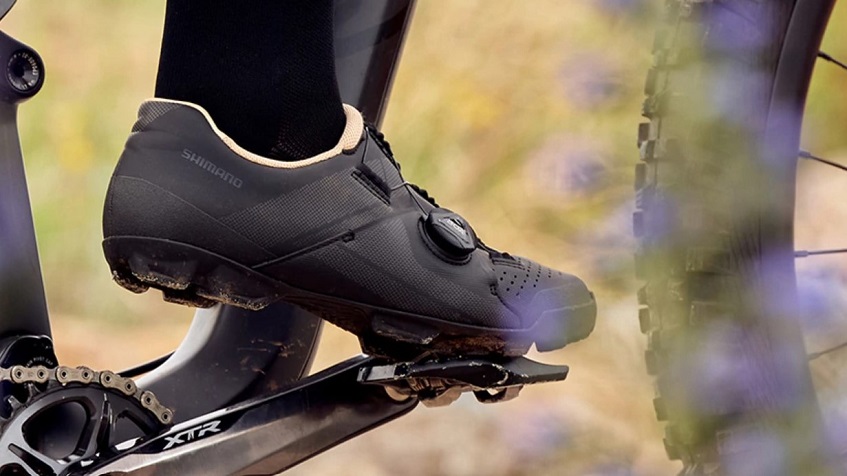
Clip-in shoes often called clipless shoes, are used for everything from cross-country racing to downhill racing and they come in a number of styles to fit the intended use. They do, however, have significantly firmer soles than a flat pedal shoe. Clip-in mtb shoes are virtually identical to their flat pedal counterparts, with the exception of a cleat placement on the soles. The clip-in system keeps you glued to the bike throughout those bumpy runs or leaps. Your foot will be released if you move your heel to one side.
One of the greatest benefits of purchasing clip-in mountain biking shoes is that they can boost the riding efficiency for some riders. Clips ensure that your feet are always in the appropriate place on the pedal. This enables you to ride easily and forcefully without having to worry about your feet slipping around on the pedal. Clip-in pedals also allow you to deliver power across a greater portion of the pedal stroke. If you have a sloppy or less-than-perfect pedal stroke, being clipped in may be beneficial.
Moisture-Wicking Jersey for Staying Dry
When it comes to mountain bike clothes, the appropriate top is probably less significant than the right bottoms, but there is still a good reason to purchase one. First and foremost, mountain biking is a great workout, so you’ll be sweating profusely! Most mountain bike jerseys use wicking merino wool and synthetic fabrics to help you manage your temperature. Second, accidents happen, and clothing serves as protection. While a tank top will keep you cool on the ascent, it will not protect you from the ground if you fall.
Bike Shorts and Padded Tights for Comfort
Mountain-bike shorts, like road-bike shorts, include elasticity for ease of leg mobility and a cushioned crotch lining to prevent friction and absorb perspiration. The majority of mountain bike shorts are made of tough materials and contain a number of pockets. The weight of the cloth and the length of the shorts should be increased as your requirement for abrasion protection grows. Shorts for downhill riding, for example, should be thicker and longer than shorts for other riding styles.
Mountain bike shorts’ integrated cushioning can be slightly thinner than road cycle shorts’ since you sit more erect and your riding position alternates between sitting and standing. Most liners are detachable, giving you the option of purchasing cushioned liner shorts in addition to your cycling underwear. It is mostly a question of personal taste whether you use an integrated liner or separate cycling underpants.
Bike Gloves for a Steady Grip
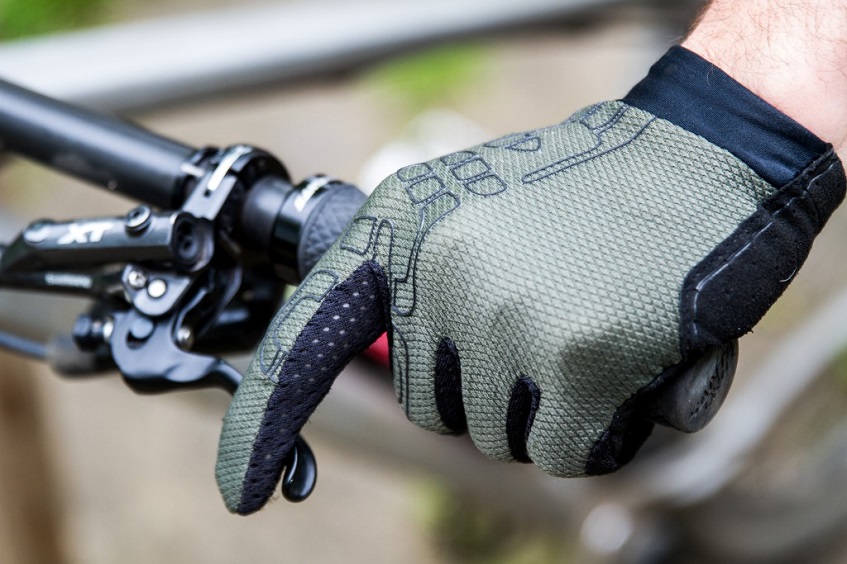
Although not all riders prefer to wear gloves, wearing them is recommended to all, especially novice riders. Gloves not only improve your grip on your handlebars and brake levers, but they also help you decrease hand and arm fatigue, allowing you to ride for longer periods of time. Mountain bike gloves also keep your digits toasty and protect you from falls. Look for gloves that fit your hand shape properly, with no additional material bunching up, so you can use your brake levers, shifter, and dropper post freely.
Mountain Bike Helmets for Impact Protection
The most essential piece of protective gear to wear while mountain biking is your helmet. Mountain bike helmets provide more protection over the back of your head and ears, and they frequently include safety technologies such as MIPS for increased impact protection.
As for mountain biking at night, make sure you shop some of the best led headlamps the market has to offer. Riding at night has been safer and much easier in recent years as headlights have improved. The introduction of LED lighting, as well as lithium-ion and lithium polymer batteries, has resulted in a brighter field of view and a longer light source.
Mountain Biking Pads for Preventing Knee and Elbow Injuries
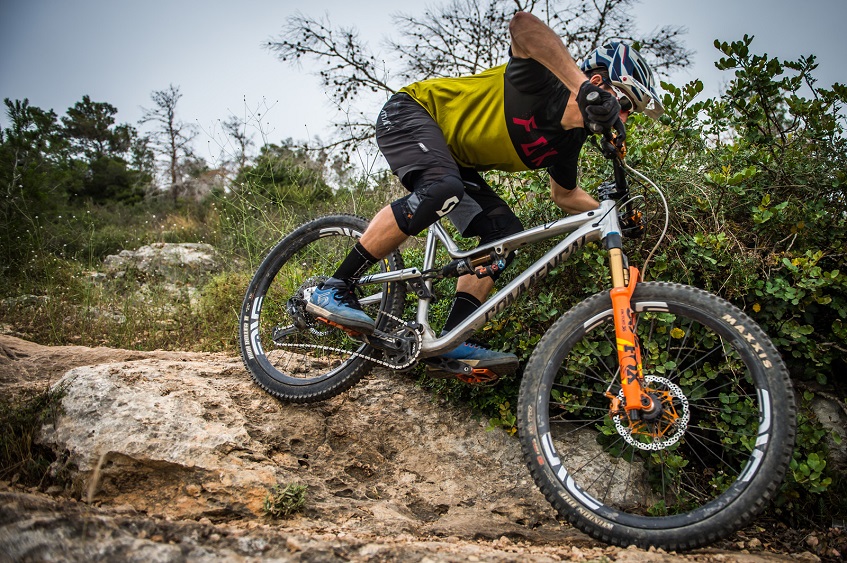
Depending on the sort of riding you do and your risk tolerance, you may want to add additional protection to your mountain bike kit than simply a helmet. Knee pads are the most frequent form of pad used by mountain bikers. Knee pads are recommended for new riders as well as those who do a lot of descending and enduro-style riding. For additional information, see our buying guide for mountain bike knee pads. Elbow pads, padded shorts, and chest/back protectors are other sorts of padding to seek for.
Horse Riding Helmet Buying Guide
Horse riding can be something you do as a hobby or professionally. The basic activity of riding a horse evolved over the years into a discipline that involves trained horses. Still, no matter how experienced you are, this isn’t something you should do without protecting yourself first.
Horse riding helmets offer the much-needed protection to fully enjoy the experience while you’re riding a horse. This is a fun activity and a great discipline but it can also be very dangerous and even life-threatening if you do it without the proper equipment.
Read MoreThe Main Differences Between Skateboards and Longboards
Skateboarding, as we know it today, was born sometime around the early 1950s, when a group of surfers in California wanted to do something when the waves were flat. So, they just placed two pairs of wheels on a wooden plank and called it “sidewalk surfing”. Of course, those skateboards were significantly different than the ones we have today. Nevertheless, over the years, they’ve evolved into what we have today, and it wasn’t long after that longboards were introduced. And while longboards and skateboards are quite similar to one another, there are distinct differences that make riding them vastly different.
Skateboards never truly managed to recreate the surfing sensation, due to the fact that their design was quite different from that of surfboards. With the arrival of longboards, however, enthusiasts got to experience something that feels much closer to surfing on land. Initially, they put roller-skate wheels on their surfboards and slowly started shaping longboards as we see them today. The entire idea was to keep as much of the original shape of surfboards and add soft, flexible wheels that help capture the feeling of riding waves. So, should you get a longboard or skateboard the next time you visit your favourite skate store? The answer to this question will depend on your preferred riding style and a few other factors.
The Shape and Size of the Board
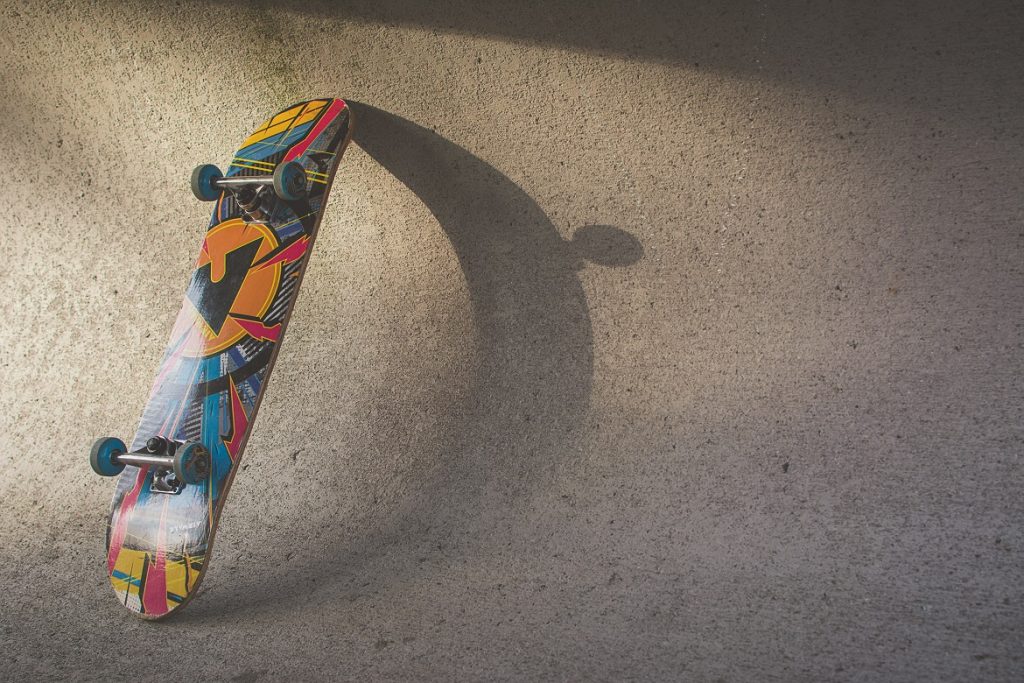
Naturally, longboards are significantly longer than skateboards, usually somewhere between 33 and 60 inches long and about 10 inches wide. Skateboards, on the other hand, are typically 28-32 inches long and 8-10 inches wide. This difference in size is exactly what makes longboards more stable for riding and it provides great rail-to-rail balance, making them ideal for beginners. In terms of shape, skateboards have a variety of different designs, but the shape is pretty much the same. The deck is typically curved upwards at both ends, which helps skaters perform tricks. On the other hand, longboards have narrow, long decks and they come in a wide range of sizes and shapes that provide a different riding experience.
The Wheels and Trucks

Both longboards and skateboards feature trucks at the bottom, but they’re quite different. Skateboard trucks are far more rigid, making them ideal for grinds and performing tricks. Further, skateboard trucks are narrower and use a TKP (traditional kingpin) and come in a wide range of sizes. Ideally, you want the truck to be about the same size as the maximum width of the deck. Longboard trucks, on the other hand, are more flexible, which makes the entire longboard more flexible. Due to this, the entire longboard-riding experience feels much smoother and more comfortable. Additionally, longboard trucks are wider, and they feature an RKP (reverse kingpin). Similarly to skateboard trucks, you should choose longboard trucks according to the width of the board.
When it comes to wheels, as briefly aforementioned, longboards feature bigger and softer wheels, making them faster and more suitable for riding on all types of surfaces. Moreover, they buffer the obstacles on the road, like cracks and pebbles, making long rides far more comfortable. The smaller wheels on skateboards make them ideal for performing tricks and maintaining balance, but they can be easily thrown off by road obstacles.
Maneuvering the Board
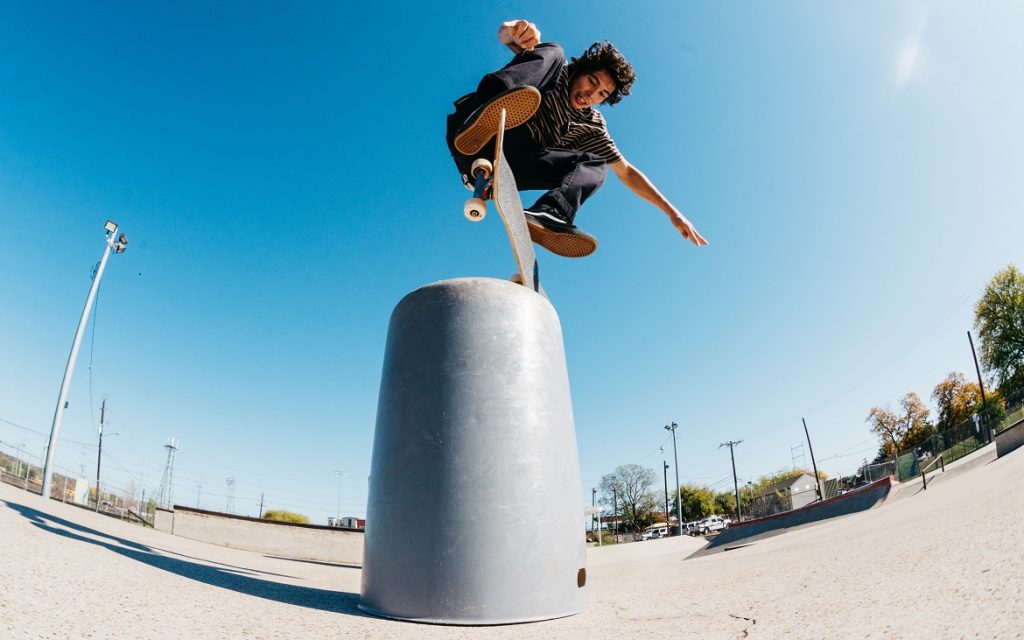
Obviously, both skateboards and longboards require a leg push to get the initial thrust. Skateboards excel at ramp riding and performing tight turns, and their light weight makes them great for flips and leaps. However, all of this also makes them less stable and uncomfortable for extended riding. Longboards, on the other hand, are designed for transport and long-term riding on any type of smooth terrain. They’re also great for downhill and cross-country riding. In order to get speed and thrust, skateboarders need to use their feet, which isn’t practical nor safe when cruising at high speed. However, the design of the longboards allows you to “pump” the board by shifting your weight back and forth. This creates the force and thrust you need to move forward without having to use your feet to push yourself. As a result, you can cruise indefinitely on downhill and flat surfaces.
Which One Is Ideal For You?
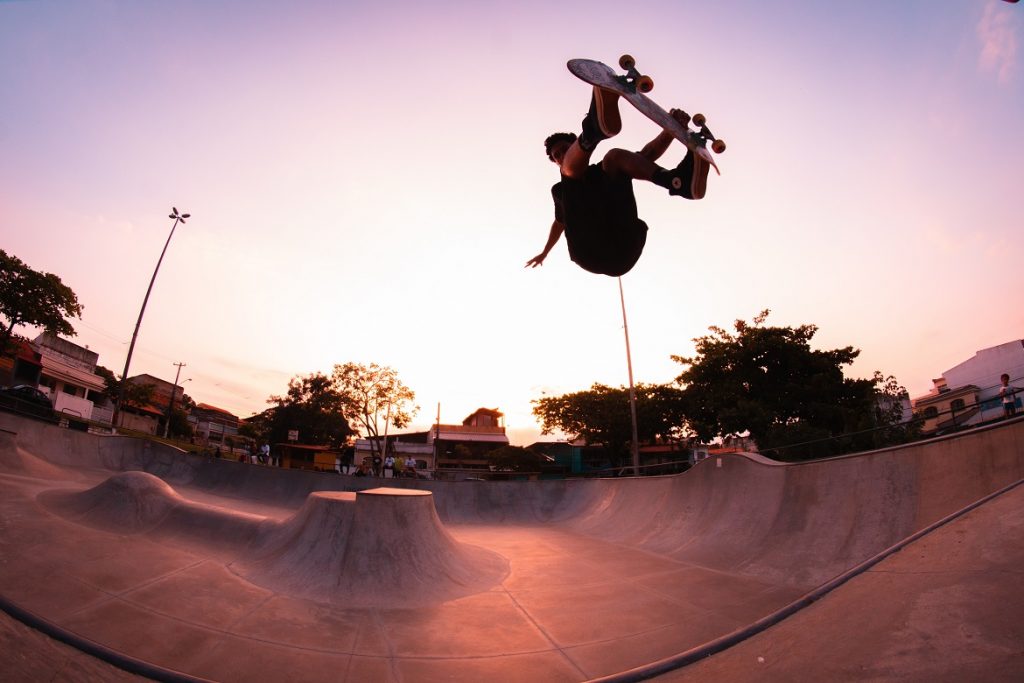
As you can see, both skateboards and longboards can be really fun. The most important thing you need to consider before visiting a skate store is what you need from the board. Are you more into performing tricks and stunts? Or are you more of a chill, cruiser type? If you’re a beginner, longboards are probably easier to learn how to ride due to the size and shape of their board, which makes it easier to get used to and find balance. Although less agile then skateboards, with the right amount of practice and technique – ramping, flipping and barrel rolls are still possible.
Types of Lures: Don’t Let the Plenty Fish in the Sea Flee
As opposed to the natural types of bait in the form of worms and minnows, artificial fishing lures can be reused over and over again. But the fact that one can catch multiple fish with one lure isn’t the only reason why avid fishermen prefer this option. Lures come in a wide array of styles and variations, each specifically design for a specific type of fish or a group of similar fish species. Fishing lures are generally designed to imitate smaller fish, insects, larvae and other creatures that fish eat in the wild, however, many of them are also designed in such way as not to attract unwanted attention from annoying creatures that aren’t the target demographic. That being said, let’s go through the four most common types of fishing lures.
What Makes Yoga Popular?
Ever feel like you’re at the end of your tether, frequently dealing with stress and anxiety, as well as a restless mind and are in need of a break? It’s time to give yoga a try. There are reasons behind all the hype enough to convince you to make it part of your lifestyle. Read More
Motorcycle Cover – a Simple Solution to Keep Your Ride Well-Protected
Cars are still the more popular choice when it comes to means of transportation. However, I’m a great motorcycle enthusiast and I love all the perks that my ride provides me. First of all, taking a road trip on a bike allows me to enjoy the scenery in a way I could never experience if I traveled by car. Second, the money I save on gas, I spend on entertainment and delicious food. Snuggling on my bike with my girl is an added bonus.
In order to keep my motorcycle in top condition, there is a maintenance routine that I follow. I regularly clean it, check the oil, keep tire pressure as recommended, and change the brake pads when necessary. I also use a motorcycle cover to protect it against ultraviolet radiation, dents, scratches, and tough climate conditions. The cover also makes my bike not that obvious to thieves.
When I bought the first cover for my bike, I didn’t take the time to research the best features it should have and I ended up getting a cheap and inefficient one that I soon needed to replace. For that very reason, here are some tips from my personal experience to help you choose the best motorcycle cover.
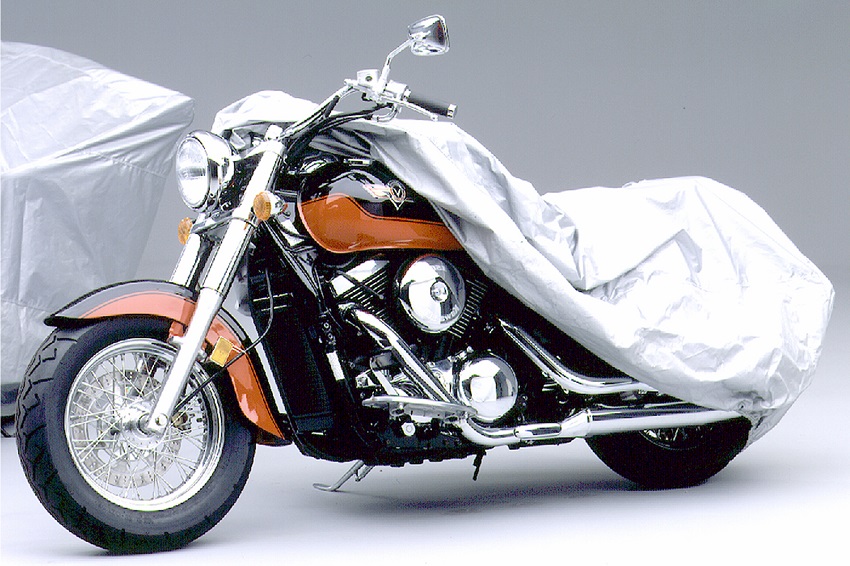
Fit
You will find motorcycle covers that are made to fit bikes of different sizes and some designed for specific models. As a motorcycle owner, you may be able to guess the size of the cover you need, but it never hurts to take the exact measurements of your bike first. Size varies from a brand to a brand, so always compare your measurements to the sizing charts listed on your potential purchase. If you can’t find a cover that exactly matches the size of your bike, it’s better to choose one that is bigger rather than one that’s too small.
Measuring your motorcycle involves determining the height, width and length. To find the height, measure from the ground to the tallest part of the bike (often the handlebars). There is no secret to measuring the width, while the length should be measured from the tip of the front tire to the tip of the back tire.
Materials
Materials vary in thickness, weight, and protection. High-quality covers are often made from lightweight and waterproof polyester. This type of covers is what you need for maximum resistance to rain. There are other options made of thicker fabrics, but they tend to be a lot heavier. You will also want your motorcycle cover to be breathable, especially if you intend to keep it covered for a longer period of time. This will allow condensation and heat to escape, which prevents mold, rust, mildew or water damage.
The Great Benefits of Functional Fitness Rigs
Most of us exercise because we want to shed weight, build muscle mass, or tone our physique. These are all great reasons to hit the gym, however, there’s another benefit to sticking to a fitness routine. You see, certain types of exercises can also improve the way you move around your day, help you maintain proper posture and reduce the risk of injuries. What am I talking about? Well, the name for it is functional training. Read More
Types of Camping Beds: Get Your Z’s as You Please
When it comes to camping there is no doubt that a good night’s sleep starts with having the right type of mattress. Speaking from personal experience, having little to no sleep when camping can turn into a real nightmare especially if you plan on having some interesting activities the next day like exploring the place or hiking. Now, let me get something out of chest from the very start – you can right here and right now forget about all the “dreamy” commercials that try to convince you how precisely this product is ideal for everyone. The truth is that there is no such thing as ‘fit for everyone’ product because we are all different, so if a sleeping bag, for example, works for me, it might not work for you. It is safe to say that the golden rule is the more you read the more you know (the more you try, in my case, as I tried a lot of types of camping beds). That being said, keep reading if you want to narrow down your choices. Read More
Make Travelling with Your Bike an Easy Task
Whether you are a professional or an amateur cyclist, if you are planning to fly or drive to your next cycling destination, you are in need of a travel case for your bike. So, for those of you who are ready to test their cycling skills amongst a new crowd, or simply enjoy the perks of roads less travelled, you first need to make sure that you choose a travel case that can ensure it arrives at the destination in one piece and ready to roll. There is no single bike case that will be perfect for everyone. However, there are a number of picks that will surely satisfy your personal wants and needs.
The Big Dilemma: Soft Cases or Hard cases?
As the name suggests, soft cases are commonly made from flexible fabrics like padded nylon, or semi-rigid polymers with specific padding and shaping to hold bikes. They are for sure the more lightweight option for transport of the both. Additionally, they are more compact and easier to pack. Because of their flexible nature, when it comes to soft bike cases, it is best to provide some extra padding of your own to ensure your bike is well supported. As an additional padding option, you can use towels, bubble wrap, foam or some clothes you plan on taking with you on your trip. (Extra baggage space! Yay!)

Surprisingly, flexibility and less weight bring problems too. You need to be extra careful when packing your bike and you need to be aware of the possibility that a careless baggage handler can load other things on top of it. This is not a possibility when it comes to hard travel cases for bikes. If protection is an absolute priority, hard cases go for the win. These are made from resilient plastics and are not as nearly as flexible as the soft ones. Furthermore, hard cases do not always come with the space needed for wheels, which is not such a big issue since there are special separate wheel bags which will do the trick and help you with your transport.

A Slightly Smaller Dilemma: Wheeled or Carried?
Even though technology today strives to make sturdier things lighter, travel cases for bikes can weigh 6-8 kg, and with the bike (and whatever else you stuff inside) you are easily doubling that figure. A larger part of the travel cases do feature wheels for easier transport, but there are few which opt for a simpler, lighter, self-carry style. When choosing the ideal case for you, take into consideration what else you’ll be taking with you and if you can do without wheels, but for most people, wheels are a must-have.

Finally, wheels or no wheels, handlers are still a mandatory part of the bike cases. Honestly, the more of them there are, the better. Bike cases are not always easy to maneuver (even lighter ones) and it is always nice to have convenient places to grab and hold onto. If nothing more, at least look for handles on both sides, the top, and the front.
The Different Types of BMX Seats
Whether you’re building your own BMX from scratch, or you only want to replace the existing seat, there are many important things you ought to consider prior to purchasing a new seat. The different features you need to pay attention to depend on the riding style, level of experience and also have to do with the level of durability and comfort.
How to Choose a Good Gymnastics Mat for Home Use
Gymnastics is a wonderful physical activity that can not only increase your flexibility and improve your general health but also help you get in touch with your body and mind. Kind of like yoga, but a lot more fun. So, no wonder more and more people practice gymnastics outside of the gym class. But practicing this sport at home carries some risks if you’re inexperienced or don’t use the right equipment and accessories. Since it’s an activity that involves drops and heavy landings, it’s important to have a good gymnastics mat that can cushion them and prevent injuries. Here’s what you need to look for in a mat. Read More
Bike Mounted Lights and How Easy They Can Make a Night Ride
If you ever decide that you are in the mood for a bike ride at night because you want to feel some of that chilly night air or just make sure that there is no one around if you enjoy riding alone, then there is some basic gear that you will need. Included in this gear is a standard helmet, some standard knee and elbow pads, and a standard 10,000 dollar military grade “see in the dark like it was daytime” pair of night vision googles. Or alternatively, you could get yourself a flash light. Read More

